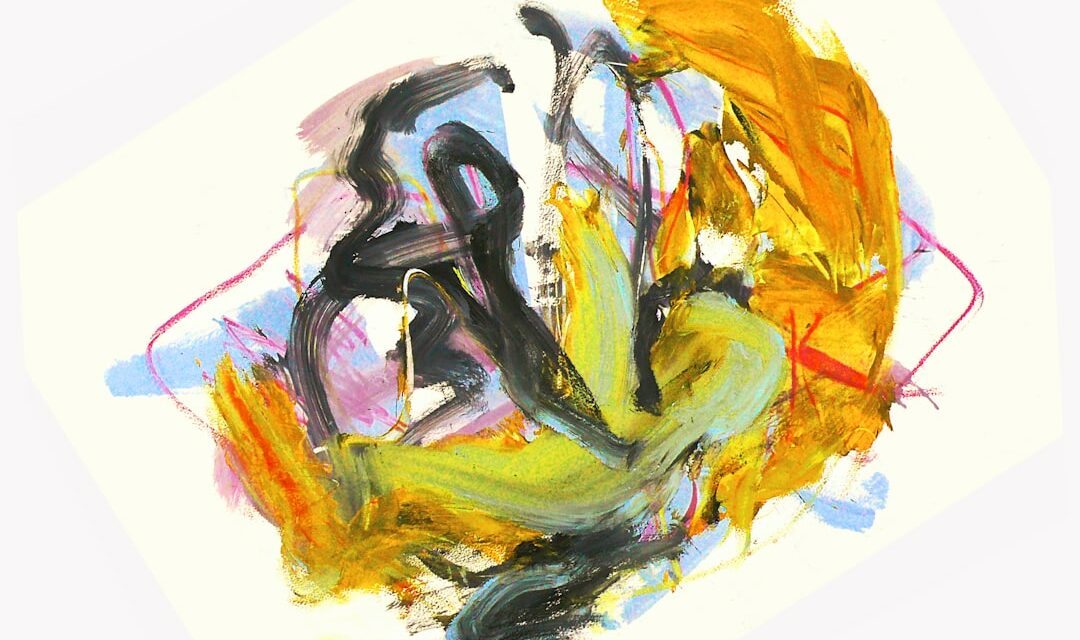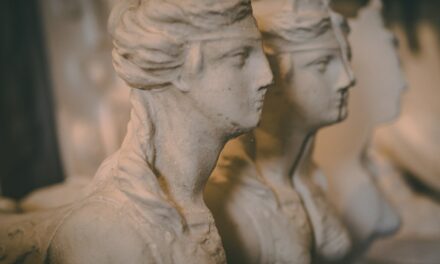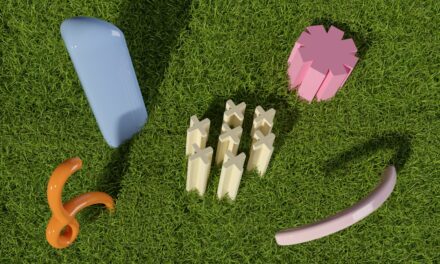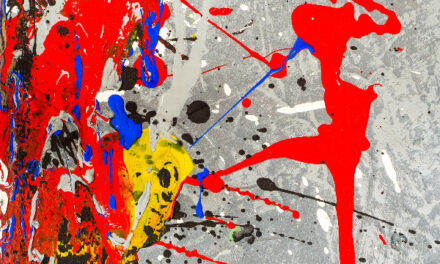Baroque art originated in Italy in the early 17th century, and the term “Baroque” is believed to have derived from the Portuguese word “barroco”, meaning irregularly shaped pearl. The Baroque period was a time of significant change and upheaval in Europe, which was reflected in the art of the era. The Catholic Church, which had been the primary patron of the arts during the Renaissance, continued to play a crucial role in the development of Baroque art.
However, the Counter-Reformation also had a substantial impact on the art of the period, as the Church sought to utilise art as a means of inspiring piety and devotion among the faithful. The Baroque period was also characterised by a renewed interest in the natural world and a growing fascination with the human form. This was reflected in the art of the time, which often featured dramatic, dynamic compositions and a heightened sense of emotion and movement.
Baroque art was also distinguished by its use of light and shadow to create a sense of drama and intensity. This was partly due to the influence of Caravaggio, an Italian artist who was renowned for his use of chiaroscuro, a technique that involves the use of strong contrasts between light and dark. As a result, Baroque art often possessed a theatrical quality, with its emphasis on spectacle and grandeur.
Summary
- Baroque art originated in 17th century Europe, with its roots in the Catholic Counter-Reformation and the absolutist monarchies of the time.
- Characteristics of Baroque art include dramatic use of light and shadow, intense emotion, and a sense of movement and energy.
- Key artists of the Baroque period include Caravaggio, Bernini, and Rembrandt, who all made significant contributions to the development of Baroque art.
- Baroque art in architecture is known for its grandeur, ornate decoration, and use of dramatic elements such as domes, columns, and elaborate facades.
- Baroque art in sculpture is characterised by dynamic, theatrical compositions and a focus on capturing the intensity of human emotion and physical movement.
- Baroque art in painting is known for its use of chiaroscuro, or the contrast between light and dark, as well as its emphasis on capturing the drama and emotion of the human experience.
- The legacy of Baroque art can be seen in the continued influence of its dramatic style and emotional intensity on subsequent art movements, as well as its lasting impact on European architecture and design.
Characteristics of Baroque Art
The Emphasis on Movement and Action
One of the key characteristics of Baroque art is its emphasis on movement and action, which is often conveyed through the use of diagonal lines and swirling forms. This sense of movement is also reflected in the use of foreshortening, a technique that involves depicting objects or figures in a way that makes them appear to recede into the distance.
Creating Depth and Drama
This creates a sense of depth and space in the artwork, as well as a feeling of dynamism and energy. Another important characteristic of Baroque art is its use of light and shadow to create a sense of drama and intensity. This was often achieved through the use of chiaroscuro, a technique that involves the use of strong contrasts between light and dark.
A Sense of Grandeur and Spectacle
This technique was used to create a sense of volume and three-dimensionality in the artwork, as well as to heighten the emotional impact of the composition. Baroque art also often featured rich, vibrant colours and elaborate ornamentation, which added to its sense of grandeur and spectacle.
Key Artists of the Baroque Period

The Baroque period produced many great artists who made significant contributions to the development of Baroque art. One of the most important figures of the period was Caravaggio, an Italian artist who was known for his use of chiaroscuro and his dramatic, realistic style. Caravaggio’s work had a major impact on the development of Baroque art, and he is often credited with pioneering the use of tenebrism, a technique that involves the use of strong contrasts between light and dark to create a sense of drama and intensity.
Another key figure of the Baroque period was Gian Lorenzo Bernini, an Italian sculptor and architect who was one of the leading figures of the Baroque movement. Bernini was known for his dynamic, theatrical style, as well as his use of light and shadow to create a sense of drama and emotion in his sculptures. His work had a major impact on the development of Baroque art, and he is often considered one of the greatest sculptors of all time.
Baroque Art in Architecture
Baroque architecture was characterised by its grandeur and opulence, as well as its use of dramatic, dynamic forms. One of the key features of Baroque architecture was its use of elaborate ornamentation, which was often used to create a sense of grandeur and spectacle. This was often achieved through the use of richly decorated facades, elaborate stucco work, and intricate detailing.
Baroque architecture also often featured dramatic, dynamic forms, with curved lines and swirling shapes that created a sense of movement and energy. Another important feature of Baroque architecture was its use of light and shadow to create a sense of drama and intensity. This was often achieved through the use of large windows, which allowed natural light to flood into the interior spaces, creating a sense of brightness and openness.
Baroque architects also often used dramatic lighting effects to create a sense of drama and emotion in their buildings, using light to highlight certain features or create a sense of depth and volume.
Baroque Art in Sculpture
Baroque sculpture was characterised by its dynamic, theatrical style, as well as its use of light and shadow to create a sense of drama and emotion. One of the key features of Baroque sculpture was its emphasis on movement and action, which was often conveyed through the use of dynamic poses and swirling forms. This sense of movement was also reflected in the use of foreshortening, which created a sense of depth and space in the sculpture.
Another important feature of Baroque sculpture was its use of light and shadow to create a sense of drama and intensity. This was often achieved through the use of tenebrism, a technique that involves the use of strong contrasts between light and dark to create a sense of drama and emotion. Baroque sculptors also often used dramatic lighting effects to create a sense of depth and volume in their work, using light to highlight certain features or create a sense of three-dimensionality.
Baroque Art in Painting

The Emphasis on Movement and Action
One of the key features of Baroque painting was its emphasis on movement and action, which was often conveyed through the use of diagonal lines and swirling forms. This sense of movement was also reflected in the use of foreshortening, which created a sense of depth and space in the painting.
The Use of Light and Shadow
Another important feature of Baroque painting was its use of light and shadow to create a sense of drama and intensity. This was often achieved through the use of chiaroscuro, which involved the use of strong contrasts between light and dark to create a sense of volume and three-dimensionality in the painting.
The Use of Colour and Ornamentation
Baroque painters also often used rich, vibrant colours and elaborate ornamentation to add to the sense of grandeur and spectacle in their work.
Legacy of Baroque Art
The legacy of Baroque art can be seen in many aspects of modern culture, from architecture to fashion to music. The dramatic, emotional style of Baroque art has continued to influence artists across all mediums, inspiring them to create work that is dynamic, expressive, and full of energy. The emphasis on movement and action in Baroque art has also had a lasting impact on modern design, with many contemporary architects and designers drawing inspiration from the dramatic, dynamic forms that are characteristic of Baroque architecture.
The legacy of Baroque art can also be seen in modern fashion, with many designers drawing inspiration from the rich colours, elaborate ornamentation, and opulent detailing that are characteristic of Baroque art. The influence of Baroque art can also be seen in modern music, with many composers drawing inspiration from the dramatic, emotional style that is characteristic of Baroque music. In conclusion, the legacy of Baroque art continues to be felt in many aspects of modern culture, inspiring artists across all mediums to create work that is dynamic, expressive, and full of energy.
If you are interested in learning more about different art movements, you may want to check out an introduction to Cubism. This article explores the revolutionary style of art that emerged in the early 20th century, challenging traditional perspectives and representations. You can read more about it here.
FAQs
What is Baroque art?
Baroque art is a style that emerged in the late 16th century and lasted until the early 18th century. It is known for its dramatic and theatrical use of light, intense emotions, and ornate details.
Where did Baroque art originate?
Baroque art originated in Italy, specifically in Rome, during the late 16th century. It then spread to other parts of Europe, including Spain, France, and the Netherlands.
What are the key characteristics of Baroque art?
Key characteristics of Baroque art include dramatic use of light and shadow (chiaroscuro), emotional intensity, movement, and ornate details. Baroque art often features dynamic compositions and a sense of grandeur.
Who were some notable Baroque artists?
Some notable Baroque artists include Caravaggio, Gian Lorenzo Bernini, Peter Paul Rubens, Rembrandt van Rijn, and Diego Velázquez.
What are some famous examples of Baroque art?
Famous examples of Baroque art include Caravaggio’s “The Calling of Saint Matthew,” Bernini’s “Ecstasy of Saint Teresa,” Rubens’ “The Descent from the Cross,” and Velázquez’s “Las Meninas.”
How did Baroque art influence later artistic movements?
Baroque art had a significant influence on later artistic movements, including Rococo and Neoclassicism. Its emphasis on emotion, drama, and grandeur continued to inspire artists for centuries.




